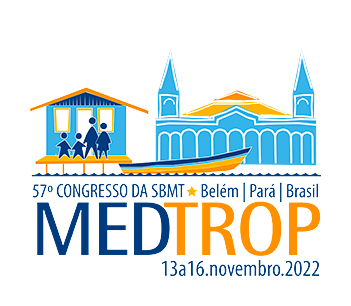Dados do Trabalho
Título
HTLV infection in Brazil’s second-largest indigenous reserve
Introdução
Human T-lymphotropic viruses 1 and 2 (HTLV-1/2) have a worldwide distribution. HTLV-1 has been associated with several diseases including an aggressive malignant disease known as adult T-cell leukemia/lymphoma (ATL) and a chronic inflammatory neurological disease called HTLV-1-associated myelopathy (HAM) while HTLV-2 has not been definitively associated with diseases. HTLV-2 is most prevalent in specific groups such as injecting drug users and the indigenous population. In Brazil, most studies about HTLV in indigenous are carried out in indigenous communities from the north of the country. Mato Grosso do Sul (MS), Central Brazil has the second-largest indigenous population in Brazil. However, there is no available data about HTLV infection in this group.
Objetivo(s)
To provide the prevalence and molecular characterization of HTLV, we conducted the first investigation of HTLV-1/2 infection prevalence in the indigenous population from Jaguapiru and Bororó villages, in Dourados city, MS.
Material e Métodos
A total of 1,875 indigenous participate in the study. All the serum samples were screened by an enzyme-linked immunosorbent assay (ELISA) commercial kit for the presence of anti-HTLV-1/2 antibodies. Positive samples were confirmed by HTLV-1/2 Western Blot (WB) assay. The HTLV-1 5’LTR region was detected by nested PCR amplification and was sequenced by Sanger.
Resultados e Conclusão
Most of the study population declared belonging to Guarani-Kaiowá ethnicity (69.18%), 872 (46.51%), and 1,003 (53.49%) were from Jaguapiru and Bororó villages, respectively. The median age of participants was 31 years and 74.24% were females. Two individuals were detected with HTLV-1 (0.1%; CI 95%: 0.1-0.2). The phylogenetic analysis revealed that isolates belong to the Cosmopolitan subtype and the Transcontinental subgroup (HTLV-1aA). The sequences obtained from the present study grouped next with other isolates from various non-indigenous populations and geographical regions in Brazil, suggesting a possible HTLV-1 transmission from non-indigenous individuals. This is the first investigation of HTLV-1/2 infection prevalence carried out among the indigenous population from Central Brazil. The results show the presence and circulation of HTLV-1 in this population. The absence of HTLV-2 infection among these Brazilian indigenous communities would suggest a distinct behavior pattern from other indigenous populations in Brazil.
Palavras-chave
HTLV-1; Indigenous; Prevalence; Central Brazil
Área
Eixo 10 | Outras infecções causadas por vírus
Categoria
NÃO desejo concorrer ao Prêmio Jovem Pesquisador
Autores
Carolina Amianti, Larissa Melo Bandeira, Gabriela Alves Cesar, Sabrina Moreira dos Santos Weis-Torres, Tayana Serpa Ortiz Tanaka, Simone Simionatto, Erica Cristina dos Santos Schnaufer, Felipe Bonfim Freitas, Julio Croda, Antonio Carlos Rosário Vallinoto, Ana Rita Coimbra Motta-Castro
